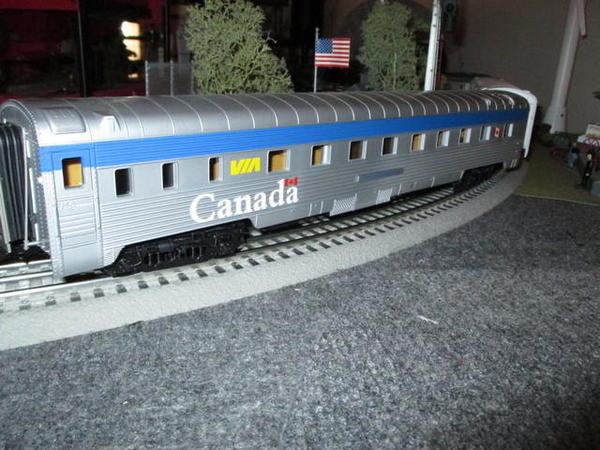Common issue with some lighted passenger cars. The addition of a 22uh choke in each passenger car pickup lead will usually solve this issue. Here's a suitable 22uh 1/2A RF Choke.
This is a correct approach that John has suggested!... I do it too and it works well.
This is why:
Why the choke works:
The TIU has an output impedance of an ohm or two at 3.25 MHZ (the DCS spread bandwidth). Lets just call it ZTIU.... Each passenger car (CV board, light, whatever...) is connected across the rails puts some parallel Z on the track. So the voltage the locomotive PS board sees is like:
(Z1||Z2||Z3+...) / [(Z1||Z2||Z3+...)+ZTIU]
So as you put more and more Zns the numerator (and your voltage gets smaller).It's a voltage divider. A choke/inductor is like a resistor with a frequency dependent impedance (ignoring a discussion of phase for now) so as the frequency goes up the impedance goes up.
ZL = 2(pi)(freq)(inductance)
If you pick a large enough value like 22uH the 60 Hz current can still flow into the passenger car becasue it's only
2(3.14)(60)(22e-6)= 0.08 ohms (so basically a short)
But at DCS frequencies its like
2(3.14)(3.25e6)(22e-6)= 449 ohms (so much much larger than the TIU output)
Essentially the passenger car still loads the track but only at the 60 Hz frequency not at the DCS frequency.
-->At the 60 Hz power the TIU sees a load of (Passenger Car Resistance) + 0.08 ohms
-->but at DCS frequencies it sees a load of (Passenger Car Resistance) + 449 ohms
It's a basic simple and elegant circuit answer.








